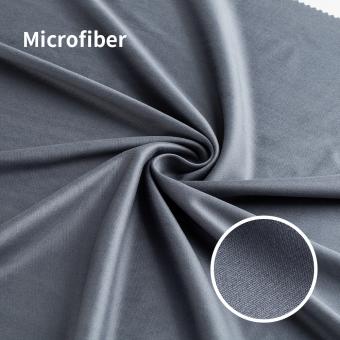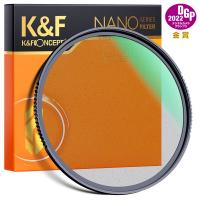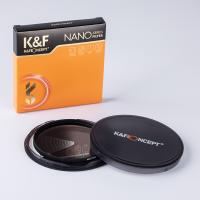What Is The Use Of Scanning Electron Microscope ?
A scanning electron microscope (SEM) is a scientific instrument used to obtain high-resolution images of the surface of a sample. It uses a focused beam of electrons to scan the surface of the sample, and the interaction between the electrons and the sample produces various signals that can be detected and used to create an image. SEMs are widely used in various fields such as materials science, biology, geology, and forensics. They provide detailed information about the topography, morphology, and composition of the sample at a much higher resolution compared to optical microscopes. SEMs are particularly useful for studying the surface features of materials, analyzing the structure of biological samples, characterizing nanoparticles, investigating the quality of coatings, and examining the surface of microelectronics devices, among many other applications.
1、 Magnification and Resolution
The scanning electron microscope (SEM) is a powerful tool used in various scientific fields for its ability to provide high-resolution images and detailed information about the surface of a sample. One of the primary uses of SEM is magnification, which allows researchers to examine samples at a much higher level of detail compared to traditional optical microscopes.
The magnification capabilities of SEM are particularly useful in materials science, where researchers can study the microstructure of materials and analyze their composition. This is crucial for understanding the properties and behavior of materials, which has implications in fields such as metallurgy, nanotechnology, and semiconductor research. By magnifying the sample up to thousands of times, SEM enables scientists to observe features that would otherwise be invisible.
Another important aspect of SEM is its ability to provide high-resolution images, which is closely related to magnification. The resolution of SEM is significantly higher than that of optical microscopes, allowing researchers to visualize fine details and even individual atoms on the sample's surface. This level of resolution is essential in fields like biology, where scientists can study the structure of cells and tissues in great detail.
In recent years, there have been advancements in SEM technology that have further enhanced its capabilities. For example, the introduction of field emission SEMs has significantly improved resolution, allowing for even more detailed imaging. Additionally, the development of environmental SEMs has enabled the study of samples in their natural state, providing insights into dynamic processes and behaviors.
In conclusion, the use of scanning electron microscopes is primarily focused on magnification and resolution. These capabilities have revolutionized various scientific fields, enabling researchers to explore the microstructure of materials, study biological samples at a cellular level, and gain a deeper understanding of the world around us. With ongoing advancements in SEM technology, we can expect even more exciting discoveries and applications in the future.

2、 Surface Imaging
The scanning electron microscope (SEM) is a powerful tool used in various scientific fields for surface imaging. It provides high-resolution images of the surface topography and composition of a sample, allowing researchers to study the microstructure and morphology of materials at a nanoscale level.
One of the primary uses of SEM is in materials science and engineering. It enables researchers to examine the surface features of materials, such as metals, ceramics, polymers, and composites. By analyzing the surface morphology, scientists can gain insights into the material's properties, such as roughness, porosity, and grain size. This information is crucial for understanding the material's behavior, performance, and potential applications.
In biology and life sciences, SEM is employed to study the surface structures of biological samples, including cells, tissues, and organs. It allows researchers to visualize the intricate details of these samples, such as cell membranes, organelles, and surface textures. This aids in understanding cellular functions, disease mechanisms, and the development of new medical treatments.
Moreover, SEM is extensively used in the field of nanotechnology. It enables researchers to investigate and manipulate nanoscale structures, such as nanoparticles, nanowires, and nanotubes. By visualizing these structures, scientists can assess their size, shape, and arrangement, which is crucial for designing and optimizing nanomaterials with desired properties.
In recent years, SEM has also found applications in the field of forensic science. It assists in analyzing trace evidence, such as fibers, hair, and gunshot residues, providing valuable information for criminal investigations.
Furthermore, advancements in SEM technology have led to the development of additional techniques, such as energy-dispersive X-ray spectroscopy (EDS) and electron backscatter diffraction (EBSD). EDS allows for the elemental analysis of a sample, providing information about its chemical composition. EBSD, on the other hand, enables researchers to study the crystallographic orientation and phase distribution of materials.
In conclusion, the scanning electron microscope is a versatile tool that plays a crucial role in surface imaging. Its applications span across various scientific disciplines, including materials science, biology, nanotechnology, and forensic science. With continuous advancements, SEM continues to provide valuable insights into the microstructure and composition of materials, aiding in the development of new technologies and scientific discoveries.

3、 Elemental Analysis
The scanning electron microscope (SEM) is a powerful tool used in various scientific fields for elemental analysis. It provides detailed information about the composition and structure of materials at a microscopic level.
One of the primary uses of SEM is elemental analysis, which involves identifying and quantifying the elements present in a sample. The SEM uses a focused beam of electrons to scan the surface of the sample, and by detecting the emitted secondary electrons, it can generate high-resolution images. These images can reveal the elemental composition of the sample by analyzing the characteristic X-rays emitted when the electron beam interacts with the atoms in the sample.
Elemental analysis using SEM has numerous applications. In materials science, it is used to study the composition of metals, alloys, ceramics, and polymers. It helps in identifying impurities, analyzing the distribution of elements, and understanding the structure-property relationships of materials. In geology, SEM is used to analyze rocks and minerals, providing insights into their formation and composition. In forensic science, SEM can be used to analyze trace evidence such as gunshot residue or paint chips, aiding in criminal investigations.
The latest advancements in SEM technology have further enhanced its capabilities for elemental analysis. Modern SEMs are equipped with energy-dispersive X-ray spectroscopy (EDS) detectors, which allow for rapid and accurate elemental analysis. EDS enables the identification of elements present in the sample and provides quantitative data on their concentration. Additionally, advanced SEMs can perform elemental mapping, which visualizes the distribution of elements across the sample surface, providing valuable insights into the material's composition and structure.
In conclusion, the scanning electron microscope is an invaluable tool for elemental analysis. Its ability to provide high-resolution images and quantitative data on the elemental composition of materials has numerous applications in various scientific fields. With the latest advancements in SEM technology, it continues to play a crucial role in advancing our understanding of materials and their properties.

4、 Topographical Mapping
The scanning electron microscope (SEM) is a powerful tool used in various scientific fields for topographical mapping. It provides high-resolution images of the surface of a sample by scanning it with a focused beam of electrons. The SEM has revolutionized the way researchers study and understand the morphology and structure of materials.
One of the primary uses of SEM is topographical mapping, which involves the visualization and analysis of surface features at a micro- and nanoscale level. SEM can provide detailed information about the surface roughness, texture, and topography of a sample. This is particularly useful in fields such as materials science, geology, biology, and nanotechnology.
In materials science, SEM is used to examine the surface of materials to understand their microstructure, grain boundaries, and defects. This information is crucial for understanding the mechanical, electrical, and chemical properties of materials. SEM can also be used to analyze the surface of materials after various treatments or modifications, such as coatings or etching, to assess their effectiveness.
In geology, SEM is used to study the surface features of rocks, minerals, and fossils. It helps geologists understand the formation processes, identify mineral compositions, and analyze the texture and structure of rocks. This information is vital for geological mapping, mineral exploration, and understanding Earth's history.
In biology, SEM is used to study the surface morphology of cells, tissues, and organisms. It allows researchers to visualize the intricate details of biological structures, such as cell membranes, organelles, and surface features of microorganisms. This information aids in understanding cellular functions, disease mechanisms, and the development of new medical treatments.
The latest advancements in SEM technology have further enhanced its capabilities for topographical mapping. For example, the introduction of field emission SEMs has significantly improved resolution and imaging quality. Additionally, the integration of energy-dispersive X-ray spectroscopy (EDS) and electron backscatter diffraction (EBSD) techniques with SEM allows for simultaneous chemical and crystallographic analysis of the sample surface.
In conclusion, the scanning electron microscope is an invaluable tool for topographical mapping. Its ability to provide high-resolution images of surface features has revolutionized various scientific fields. From materials science to geology and biology, SEM plays a crucial role in understanding the morphology, structure, and properties of materials and organisms. With continuous advancements, SEM continues to push the boundaries of topographical mapping and contribute to scientific discoveries.








































